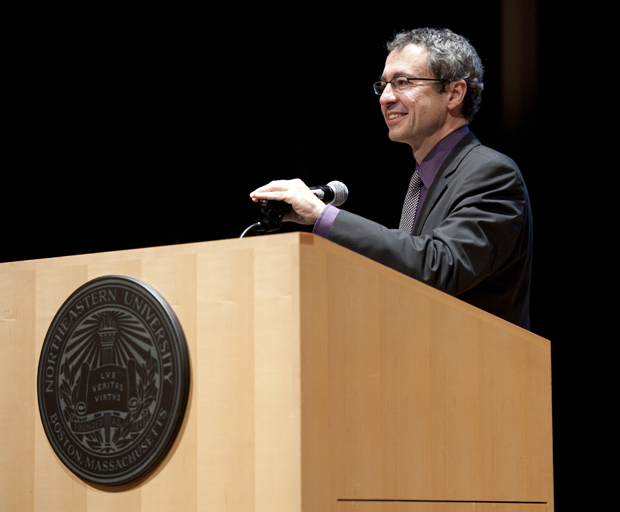3Qs: The future of architecture

Xavier Costa, dean of Northeastern’s College of Arts, Media and Design, co-chaired the 2012 Association of Collegiate Schools of Architecture International Conference, which took place on June 20-23 in his hometown of Barcelona, Spain. We asked Costa, a world-renowned architect, scholar and leader in architectural education, to expound upon the experience, in which leaders in the field discussed the relationship between architecture and civic engagement, academia, technology, urbanization, globalization and sustainability.
A series of powerful forces, including globalization, rapid urbanization and the expanding roles of technology, is primed to shape the future of architecture in both the academic and professional realms. What impact do you predict each of these factors will have on the field over the next decade?
Several profound global transformations are taking place in the field of architecture and institutions of higher education should be able to anticipate the future course of events by addressing emerging needs and providing intellectual leadership.
Architecture itself is becoming a global profession. Traditionally, architects and urban designers used to build locally, but now they are more likely to be working in locations throughout the world. This is especially true during international competitions for urban development projects in regions such as Asia or the Middle East.
In terms of rapid urbanization, cities are growing quickly — and megacities are no longer exclusive to the western world. This calls for a new capacity to design urban developments on a scale that has never existed before.
Finally, new technologies, such as intelligent materials, energy-efficient building solutions and digital representation software, are revolutionizing both the design and construction processes, which are becoming more sustainable and energy-conscious.
How would these changes be reflected in both the classroom and co-op experiences of Northeastern architecture students?
In these rapidly changing times for our field, we constantly anticipate future conditions, keeping a close eye on new technologies and the impact of globalization. The School of Architecture provides leadership and educates students not only to be successful architects today but also five and 10 years down the road.
Through experiential learning and co-op, our students get firsthand experience in their field from the very beginning. Architecture students do co-op all over the world, from Boston and New York City, to Germany, Spain and China. Through international co-op, we offer students the chance to get valuable experience working in a different context, one that reflects the conditions of a professional environment and introduces them to new materials and technology.
We are currently developing new partnerships with several colleges — including the College of Engineering, the College of Science and the College of Social Sciences and Humanities — to approach architecture from an interdisciplinary perspective to enhance our understanding and knowledge of sustainability and new materials and technology.
You have called Barcelona one of the world’s main urban laboratories, where new ideas for architectural and urban design have been tested and implemented. How did growing up that environment influence your decision to become an architect?
Barcelona experienced a three-decade-long phase in which it developed into an urban laboratory — one that has been regarded highly and followed closely by many other cities around the world. It has a very rich architectural culture and those of us who grew up in Barcelona and became architects within the last 30 years have been greatly influenced by its urban transformation.
The success of the Barcelona model has to do with architecture’s capacity to engage many other sectors of city. There has been a real and fruitful exchange between architects and a range of different communities in the city, which has forged a strong sense of the importance of interdisciplinary work. You learn that you have to work, for example, with researchers in urban studies, with engineers for urban systems, and with artists to define meaningful public spaces.
What is great about Northeastern’s School of Architecture is that it does just that — our program interacts with design, communication and arts and media. This is extremely important today because individual disciplines cannot be working in isolation. Nowadays, the emphasis in this field is on producing fresh, integrated ideas that provide a strong response to cities’ new needs.





